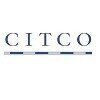

EY Global Delivery Services ( EY GDS)




10+ EY Global Delivery Services ( EY GDS) Analyst Interview Questions and Answers
Q1. How to handle a situation where you require a signature of important person who is in leave?
Delegate the task to a trusted colleague or use electronic signature if possible.
Delegate the task to a trusted colleague who has the authority to sign in the absence of the important person.
If electronic signature is an option, request the signature through email or a digital platform.
If urgent, consider reaching out to the important person on leave through phone or email for alternative solutions.

Q2. What is difference between calculated column and measure
Calculated columns are pre-defined while measures are dynamic calculations based on user input.
Calculated columns are computed during data modeling and added to the table
Measures are computed on the fly based on user input and can be changed dynamically
Calculated columns are used for static analysis while measures are used for dynamic analysis
Examples of calculated columns include concatenation of columns, while measures include sum, average, etc.

Q3. What do you know about Regulations?
Regulations are rules and guidelines set by governing bodies to ensure compliance and safety in various industries.
Regulations are enforced by government agencies to ensure compliance with laws and standards.
They are designed to protect consumers, employees, and the environment.
Examples include FDA regulations for food and drug safety, OSHA regulations for workplace safety, and EPA regulations for environmental protection.
Non-compliance with regulations can result in fines, l...read more

Q4. Tell us about the complete KYC process.
KYC process involves verifying the identity of customers to prevent fraud and money laundering.
KYC process involves collecting personal information from customers, such as name, address, and identification documents.
Verification of the information provided by customers is done through various means, such as document verification, in-person verification, and electronic verification.
Once the information is verified, the customer is considered KYC compliant and can engage in fin...read more

Q5. Tell us about the adverse media.
Adverse media refers to negative news or information about an individual or organization that may impact their reputation.
Adverse media includes news articles, social media posts, regulatory findings, and other sources of information that highlight potential risks or controversies.
Analysts use adverse media screening tools to identify and assess any negative information that could pose a risk to a company's reputation or compliance.
Examples of adverse media could include repo...read more

Q6. Difference between primary and secondary research
Primary research involves collecting data directly from original sources, while secondary research involves analyzing existing data collected by others.
Primary research is conducted by the researcher themselves, while secondary research involves using data collected by others.
Primary research is time-consuming and expensive, while secondary research is quicker and more cost-effective.
Examples of primary research include surveys, interviews, and experiments, while secondary re...read more

Q7. What is Redux and explain it
Redux is a predictable state container for JavaScript apps.
Redux is a state management tool commonly used with React.
It helps in managing the state of an application in a predictable way.
Actions are dispatched to update the state in a single store.
Reducers specify how the state changes in response to actions.
Selectors are used to extract specific pieces of state from the store.

Q8. What is porter 5 forces
Porter's Five Forces is a framework for analyzing the competitive forces in an industry.
Porter's Five Forces include: threat of new entrants, bargaining power of buyers, bargaining power of suppliers, threat of substitute products, and competitive rivalry within the industry.
It helps businesses understand the competitive environment they operate in and develop strategies to stay competitive.
For example, in the airline industry, the threat of new entrants is low due to high ba...read more


Q9. What are stateless components
Stateless components are React components that do not store or manage any state.
Stateless components are also known as functional components in React.
They are simpler and easier to understand compared to stateful components.
Stateless components are pure functions that only receive props and return JSX.
They do not have access to lifecycle methods or internal state.
Example: const MyComponent = (props) =>
{props.text};

Q10. Calculate EBIT, EBITDA, Gross profit
EBIT is calculated by subtracting operating expenses from revenue. EBITDA adds back depreciation and amortization. Gross profit is revenue minus cost of goods sold.
Calculate EBIT by subtracting operating expenses from revenue
Calculate EBITDA by adding back depreciation and amortization to EBIT
Calculate Gross profit by subtracting cost of goods sold from revenue

Q11. Lookup Function in Excel
Lookup function in Excel helps to find specific data in a table or range of cells.
Lookup function can be used to search for a specific value in a table or range of cells.
VLOOKUP and HLOOKUP are two commonly used lookup functions in Excel.
Lookup functions can be used to retrieve data from another worksheet or workbook.
Lookup functions can also be used to perform approximate matches or exact matches.
Lookup functions can be nested to perform more complex searches.

Q12. Accrual vs cash accounting
Accrual accounting records revenue and expenses when they are earned or incurred, while cash accounting records them when cash is received or paid.
Accrual accounting provides a more accurate picture of a company's financial health as it reflects all transactions, including those that have not yet been paid or received.
Cash accounting is simpler and easier to manage, but may not provide an accurate representation of a company's financial situation.
For example, if a company sel...read more

Q13. Valuation techniques
Valuation techniques are used to determine the value of a company or asset.
Discounted Cash Flow (DCF) analysis
Comparable company analysis (CCA)
Precedent transaction analysis (PTA)
Asset-based valuation
Market capitalization
Price-to-earnings (P/E) ratio
Enterprise value (EV)

More about working at EY Global Delivery Services ( EY GDS)





Top HR Questions asked in EY Global Delivery Services ( EY GDS) Analyst
Interview Process at EY Global Delivery Services ( EY GDS) Analyst

Top Analyst Interview Questions from Similar Companies









Reviews
Interviews
Salaries
Users/Month












